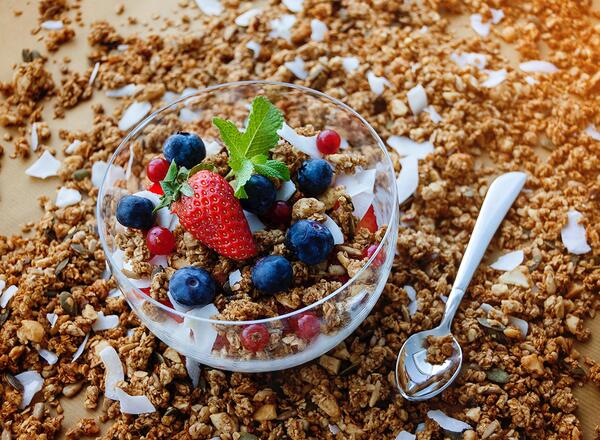
Fiber is an essential part of our diet. It plays a role in digestion, a healthy gut, and blood sugar control. What makes fiber different than other types of nutrients is that fiber is a type of carbohydrate our body cannot digest. Carbohydrates or “carbs” for short, are one of the main nutrients found in foods. Carbs also provide our body quick energy.
Fiber is a type carb that does get absorbed in the blood stream. Fiber remains in the digestive tract and contributes to a healthy gut.
According to the American Diabetes Association, adult men need about 38 grams of fiber while adult women need about 25 grams of fiber. The amount of fiber recommended is based on the calories eaten. Men usually eat more calories than women, so it is recommended they eat more fiber. Fiber rich foods include vegetables, fruits, whole grains, beans, nuts and seeds. The fiber content in foods can be found on a nutrition label and listed per serving. A medium apple contains about 4-5 grams of fiber and a slice of whole wheat bread contains about 2 grams of fiber.
Types of Fiber
There are 2 types of fiber, insoluble fiber and soluble fiber. Both types work in different ways to improve digestion.
- Insoluble fiber does not dissolve in water and can add bulk to our stool. This bulk improves movement throughout the intestines. It also keeps us feeling full for longer.
- Soluble fiber does dissolve in water.
When this fiber dissolves in water a type of gel is formed. Foods with insoluble fiber include whole wheat foods, nuts, beans and cauliflower. Foods with soluble fiber include oats, peas, beans, apples citrus fruits and barley.